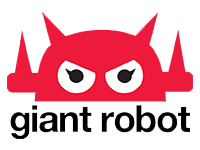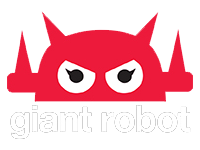Gina Osterloh on Group Dynamics and Improper Light at LACE
Way back in 2009, I interviewed my friend and fine artist Gina Osterloh for Giant Robot 59. Her carefully constructed large-format photography combines everyday props (office paper, streamers, cardboard…) with carefully thought-out light, perspective, and often herself to play with the viewer’s eye and subconscious. The concept is high but the effect of her imagery is primal, triggering reactions that range from wonder to fear to confusion. Her newest project, Group Dynamics and Improper Light, will open next summer at LACE (Los Angeles Contemporary Exhibitions) and examine the process. To pull it off, she’ll need some help and that’s where this blog comes in.
MW: You weren’t shy about discussing your process when I interviewed you in 2009, but making the process totally public is something else. Where did the concept come from?
GO: Earlier this year it was a challenge posed by Carol Stakenas and Robert Crouch of LACE, who have been following my work over time. For years I’ve been saying no to showing the constructed set because the work is the photograph. For several years I have been committed to creating a photographic space where the relationship between body and the surrounding room are both interdependent and disrupted– a visual field where background, foreground, and figure ground are folded and collapsed. That’s where all visual strategies and underlying philosophies merge.
Last year I created a body of work titled Copy Flat. It was the first time I worked with cardboard cut-out groups of bodies. I wanted to see, in the most pared-down sense, what is the shape of a group? What is the line or threshold between the individual and a group? In these photographs I also began to see both the figure and the set construction itself as “props for seeing.” I showed Copy Flat earlier this year at an artist-run space called Latned Atsar. For the first time, both in the photographs and in the gallery space, I drew a connection to the body as prop by simply adding a wall and inserting a platform to stand on. Copy Flat and the installation at Latned Atsar made me want to ask similar stripped-down questions about perception and identity, but with real people and the public.
MW: Can you talk about how sharing the process with the audience changes your work’s purpose or effect?
GO: I’ve depended on the sealed impenetrable flatness of the photograph up until this point–and I am still very seduced by its possibilities. However, it’s time for a major inverse, from studio to outside world. The suggestion of working with audience makes me want to hone philosophical drives that I haven’t fully developed in the work: interpellation (HAIL! HEY YOU!), call-and-response relationships (with the public audience being able to walk in and see process). So much of my practice is the process, which isn’t visible. Instead of the end-object emphasis that is pushed in a commercial art market gallery system, LACE is opening the field to who, what, and how the work is experienced.

MW: Having patrons of the arts support a creative process is nothing new, but doing it through a site like Kickstarter is fairly new…
GO: For anyone out there wanting to fund a project: why wait for a grant committee to decide how, when, and if a large project can be realized?
But then again it is important to share that we have a Create/Cultivate matching grant from the L.A. County Arts Commission and the National Endowment for the Arts, so I’m not knocking grants at all! The way this grant works: for every dollar an individual donate, it will be doubled. Also, we must raise $10,000 to receive the matching grant (we raised $2,000 before Kickstarter). We need to fight viciously to keep arts grants available, but also invent new means of sustaining–especially as public funding for the arts is being severed drastically.
Kickstarter is also ground-up support, and it makes who is really supporting the arts visible. It’s not about only relying and hoping for exclusive elusive collectors. This is my first Kickstarter, and I am floored, speechless, and really can’t believe how many people, artists, friends, and family (many who are not directly involved in the arts at all) have come together in support. I think that’s the phenomenon of Kickstarter: it makes all of these wide, seemingly disparate (from the middle of Ohio, Hawaii, NYC, Philippines to California) connections of support visible.
MW: Can you give a sneak preview of the three works that you’ll be making?
GO: As a starting point, one set construction will work with the concept of improper light, basically moving away from a clean flat white light, to light piercing through hundreds of pin-holes. In the other sets, there will be an emphasis on mark making, pattern, colors that address the physical faculty of vision.
But most importantly–I am very excited to collaborate and work with groups from the public that include an audience I haven’t had access to. The sets will literally be platforms of collaboration. I’m just working out the details, but groups I’ve wanted to work with range from conceptual dancers to pop-locking, to members from the circus, to the blind. I guess this is a shout out! Who wants to collaborate?
For more information about Group Dynamics and Improper Light and how you can help make it happen, check out the Kickstarter page. If you donate before October 28, you’ll be invited to a house party for supporters on November 4! You can also score some of Gina’s best works for a great price…






